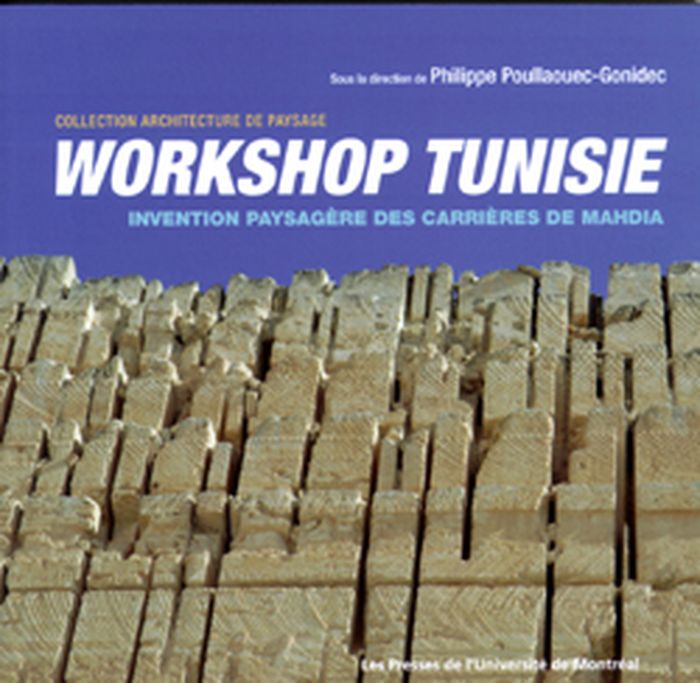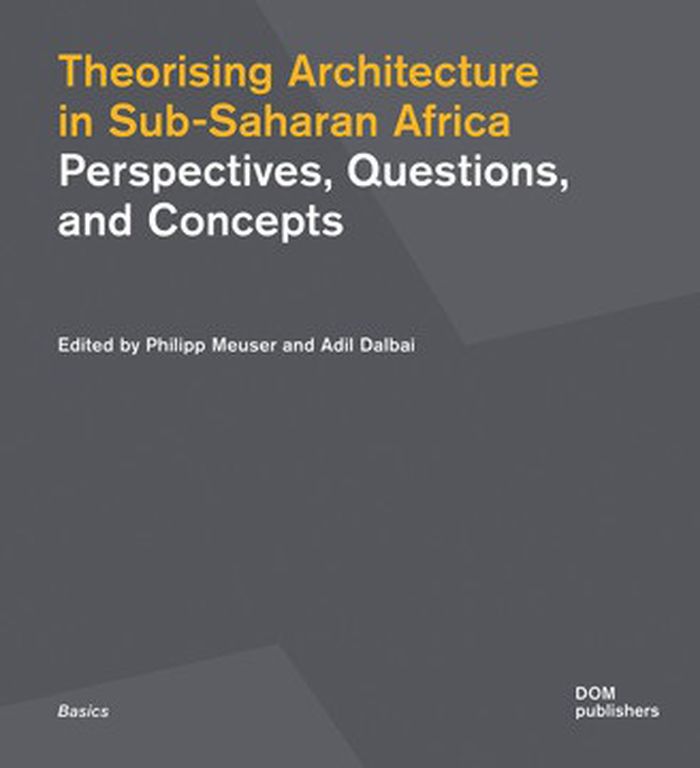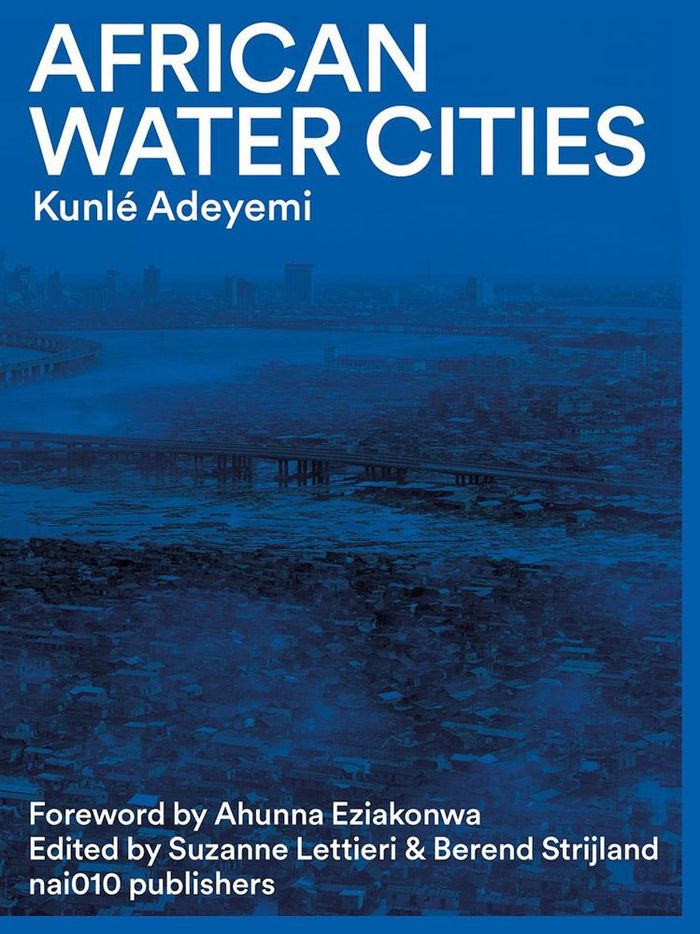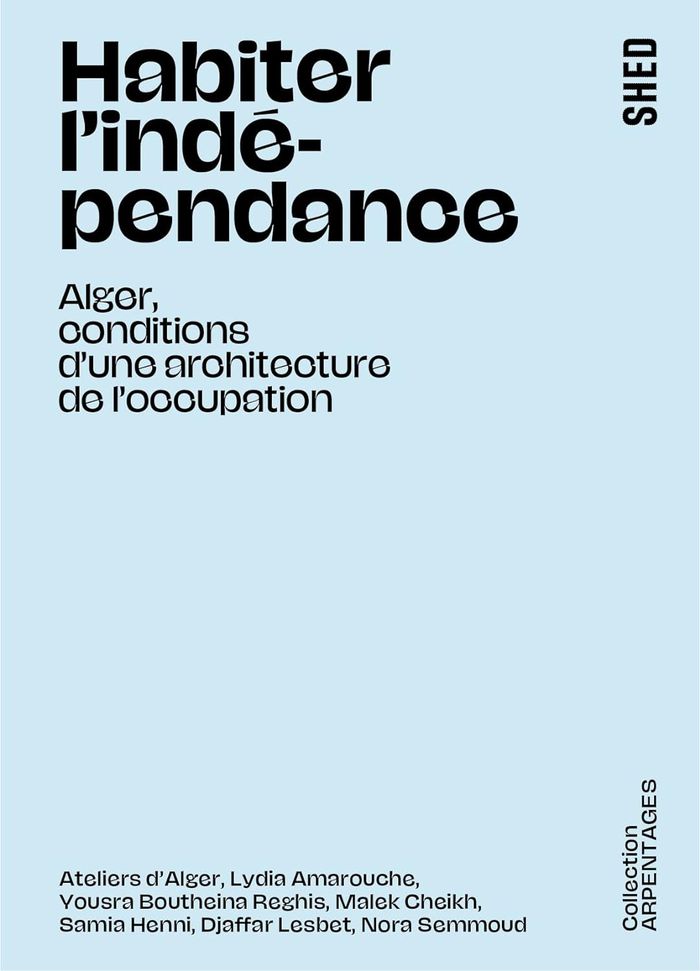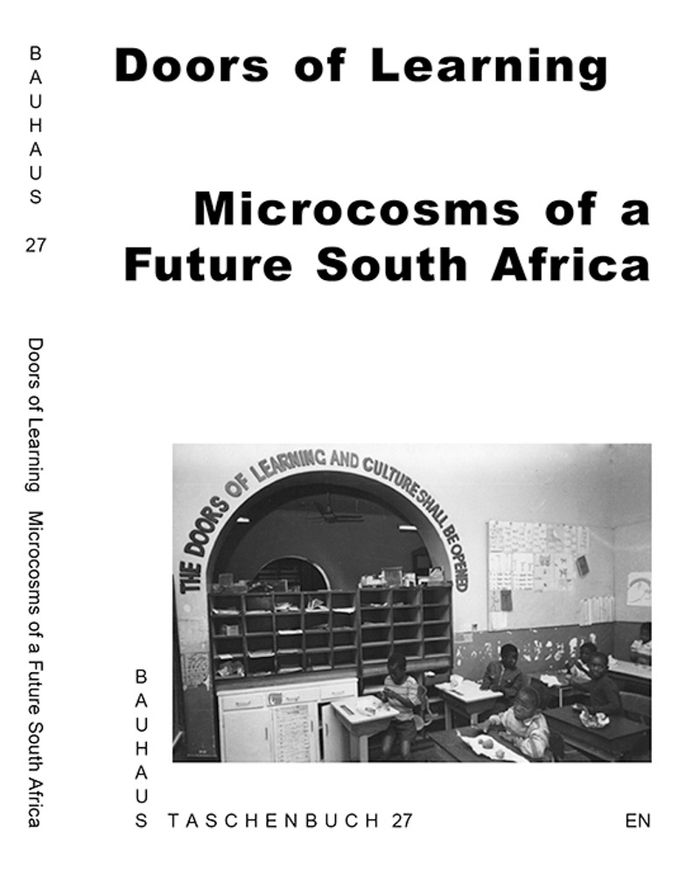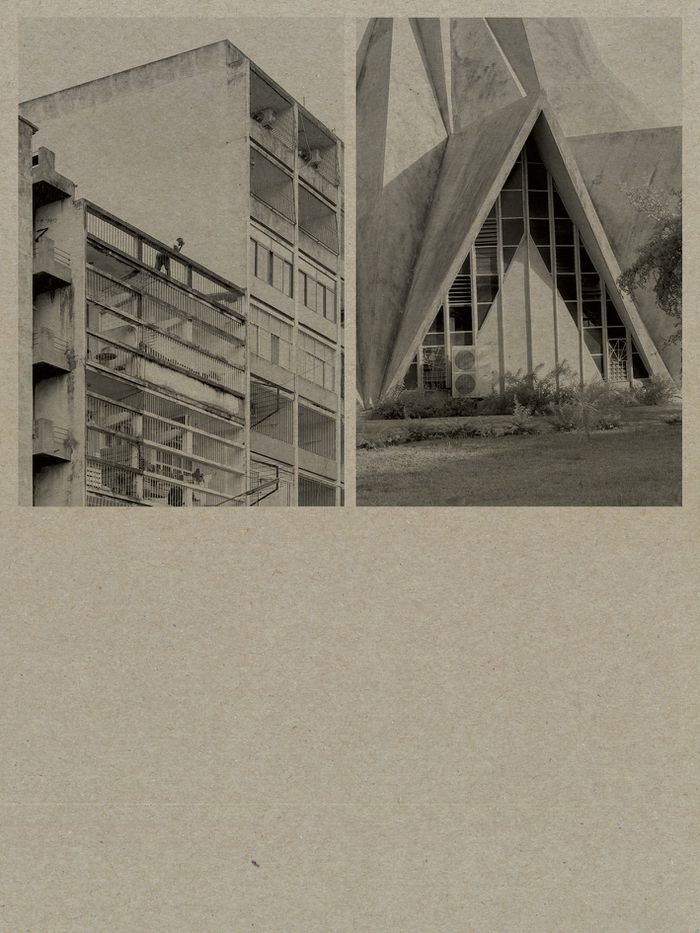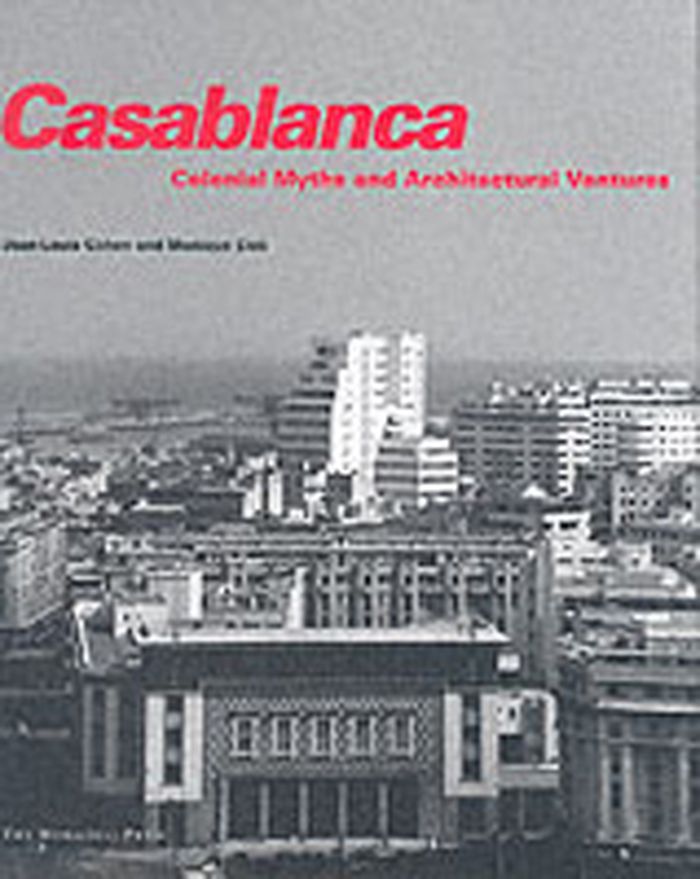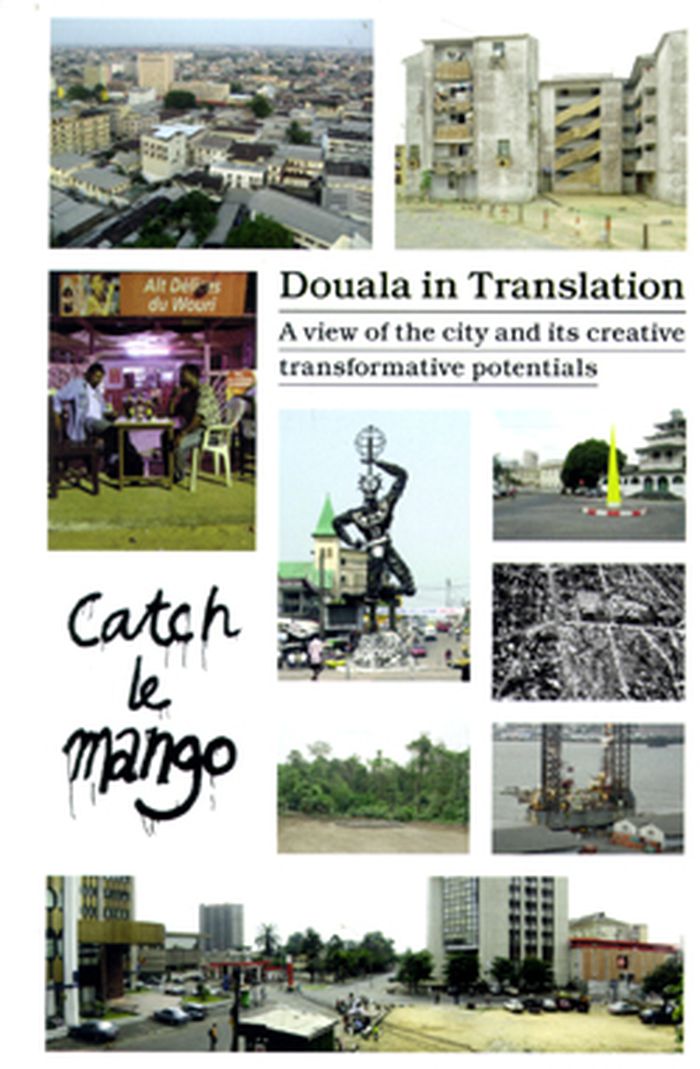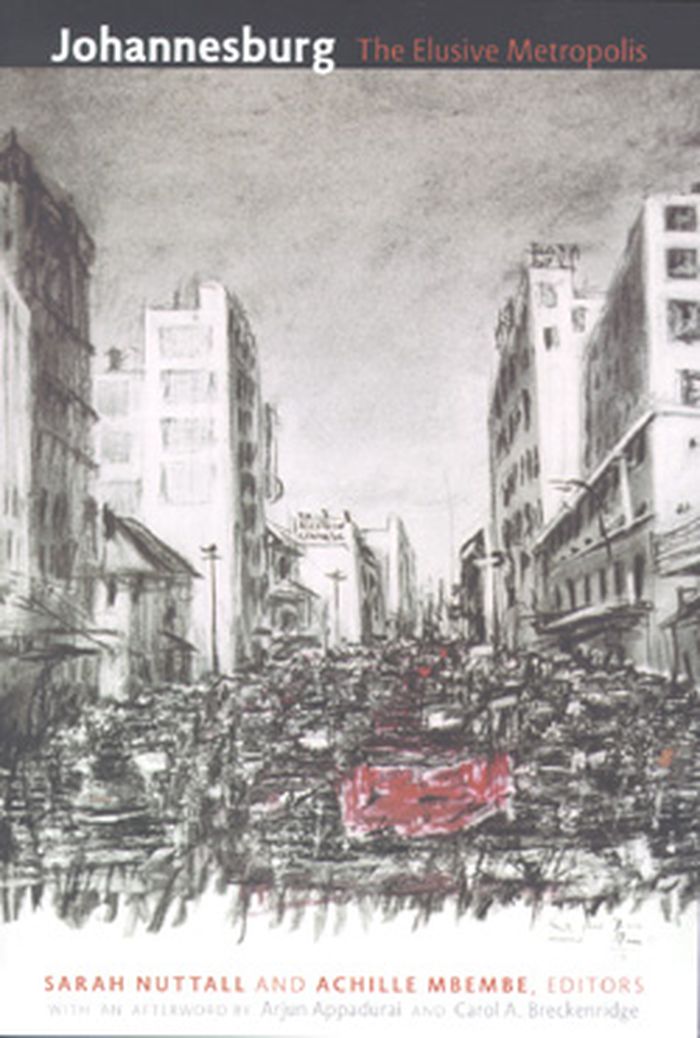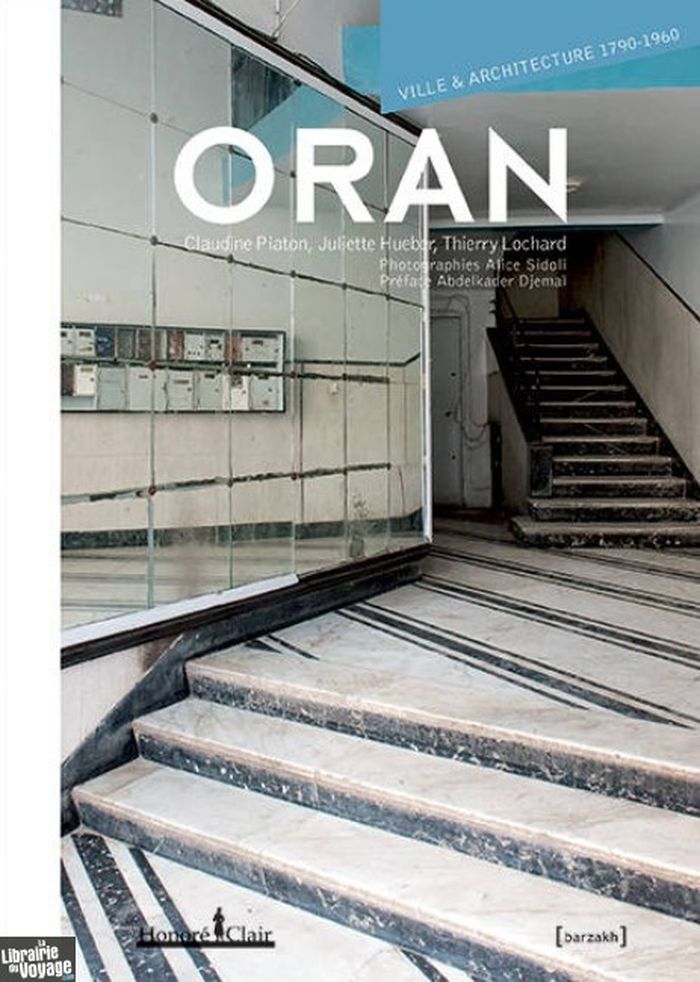$29.95
(available to order)
Summary:
Fruit d'une expérience internationale orginale qui réunit étudiants, professeurs et experts en architecture de paysage, en architecture, en urbanisme et en études touristiques, ce livre raconte le travail d'expérimentation sur la réhabilitation paysagère des carrières de Mahdia. Misant sur l'apport créatif d'un arrimage culturel entre le Maghreb, le Moyen-Orient, l'Europe(...)
Architecture since 1900, Africa
September 2007, Montréal
Workshop Tunisie: invention paysagère des carrières de Mahdia
Actions:
Price:
$29.95
(available to order)
Summary:
Fruit d'une expérience internationale orginale qui réunit étudiants, professeurs et experts en architecture de paysage, en architecture, en urbanisme et en études touristiques, ce livre raconte le travail d'expérimentation sur la réhabilitation paysagère des carrières de Mahdia. Misant sur l'apport créatif d'un arrimage culturel entre le Maghreb, le Moyen-Orient, l'Europe et l'Amérique du Nord, le workshop ravive les natures bien singulières des carrières et de leurs contextes. Et surtout, il expose un ensemble d'intentions en vues de leur mise en valeur et de leur développement.
Architecture since 1900, Africa
$54.00
(available to order)
Summary:
Considering the immense diversity of sub-Saharan Africa’s architecture and built realities, does it make sense to speak of an African architecture? How does this differ from architecture in Africa? What does the term architecture actually mean in the African context? And how could these questions be conceptualised while leaving behind pre-existing theoretical moulds and(...)
Architecture since 1900, Africa
November 2021
Theorising architecture in Sub-Saharan Africa: perspectives, questions and concepts
Actions:
Price:
$54.00
(available to order)
Summary:
Considering the immense diversity of sub-Saharan Africa’s architecture and built realities, does it make sense to speak of an African architecture? How does this differ from architecture in Africa? What does the term architecture actually mean in the African context? And how could these questions be conceptualised while leaving behind pre-existing theoretical moulds and biases? Searching for new ways to theorise sub-Saharan African architecture, this collection of 49 essays broadens and develops the discourse around the architecture of a very rapidly changing continent. Its authors – practising architects and renowned scholars – put forward an array of heterogeneous perspectives, question old tropes and emerging narratives, and challenge popular concepts whilst proposing new ones. All with the aim of critically examining and advancing theoretical reflection on African architectures, both on the continent and globally.
Architecture since 1900, Africa
African water cities
$72.50
(available to order)
Summary:
This volume presents essays, stories, research and photographs showing how African cities by waterfronts deal with two of the most significant trends of our time: urbanization and a changing climate. On the African continent, the impact of climate change is now an everyday reality. Coastal and waterfront cities in particular experience loss and damage due to significant(...)
Architecture since 1900, Africa
October 2023
African water cities
Actions:
Price:
$72.50
(available to order)
Summary:
This volume presents essays, stories, research and photographs showing how African cities by waterfronts deal with two of the most significant trends of our time: urbanization and a changing climate. On the African continent, the impact of climate change is now an everyday reality. Coastal and waterfront cities in particular experience loss and damage due to significant increases in sea level rise, rainfall and flooding. At the same time, Africa is the second most rapidly urbanizing continent (after Asia). The intersections between water and cities are therefore critical for understanding the future of urban and rural developments in Africa. Through deeper understanding of the innovative and resourceful way of life of informal water communities such as Makoko and coastal cities such as Abidjan, "African water cities" reveals key factors, challenges and opportunities shaping human, physical and economic dynamics.
Architecture since 1900, Africa
$45.00
(available in store)
Summary:
Lorsqu'en 1962 l'Algérie accède à son indépendance, la population hérite d'un espace façonné pendant 132 ans par l'architecture de l'Etat colonial français. De façon inédite dans l'histoire, un peuple va concrètement habiter l'indépendance, en investissant massivement un environnement bâti pour l'exclure, voire lui nuire. Ancré plus particulièrement à Alger, cet ouvrage(...)
Habiter l'indépendance : Alger, conditions d'une architecture de l'occupation
Actions:
Price:
$45.00
(available in store)
Summary:
Lorsqu'en 1962 l'Algérie accède à son indépendance, la population hérite d'un espace façonné pendant 132 ans par l'architecture de l'Etat colonial français. De façon inédite dans l'histoire, un peuple va concrètement habiter l'indépendance, en investissant massivement un environnement bâti pour l'exclure, voire lui nuire. Ancré plus particulièrement à Alger, cet ouvrage revient sur les conditions d'une expérimentation urbaine et questionne la composante coloniale de l'architecture et de son enseignement, au fil du temps, dans les corpus français comme algériens. Fruit d'une réflexion collective transdisciplinaire qui ose aborder des sujets peu traités, de l'architecture carcérale à la trajectoire de la statuaire coloniale, cette exploration critique de l'aménagement d'Alger entend mettre en lumière les pratiques de la ville par les personnes qui l'habitent.
Architecture since 1900, Africa
$21.00
(available to order)
Summary:
A 1988 UN Habitat seminar considered issues of housing construction in "developing countries." Included in the presentation was a prefabricated building system designed by East German architects, which was used in an education and development center operated by the African National Congress in Tanzania. In this publication, a multidisciplinary and international group(...)
Architecture since 1900, Africa
April 2024
Doors of learning: microcosms of a future South Africa
Actions:
Price:
$21.00
(available to order)
Summary:
A 1988 UN Habitat seminar considered issues of housing construction in "developing countries." Included in the presentation was a prefabricated building system designed by East German architects, which was used in an education and development center operated by the African National Congress in Tanzania. In this publication, a multidisciplinary and international group of artists, curators, historians and researchers reflect on the education and development centers as radical experiments in learning and living, as well as their spatial and design implementation in the context of the efforts to create a future democratic South Africa free of racism. This book focuses on why education was seen as the key to building a new democratic society. What were the immediate educational needs in those temporary learning environments? How were the educational priorities implemented spatially and creatively? And what was everyday life like for the people who lived there?
Architecture since 1900, Africa
Album Architectures: Maputo
$62.00
(available in store)
Summary:
L'architecture moderniste de Maputo est au cœur de cet ouvrage : les rez-de-chaussée de ses bâtiments servent de prisme pour explorer la transformation des villes postcoloniales, en mettant l'accent sur les rues, les espaces publics et les mutations urbaines. La photographie de Giovanna Silva saisit le paysage en évolution de la ville ainsi que son tissu social, tandis(...)
September 2025
Album Architectures: Maputo
Actions:
Price:
$62.00
(available in store)
Summary:
L'architecture moderniste de Maputo est au cœur de cet ouvrage : les rez-de-chaussée de ses bâtiments servent de prisme pour explorer la transformation des villes postcoloniales, en mettant l'accent sur les rues, les espaces publics et les mutations urbaines. La photographie de Giovanna Silva saisit le paysage en évolution de la ville ainsi que son tissu social, tandis que des entretiens avec Ana Tostões et Ana Raquel Machava apportent un éclairage sur le patrimoine architectural et les enjeux de Maputo. Les architectes Matteo Poli et Luca Astorri (AOUMM) discutent de ses futurs possibles et de ses héritages durables, en interrogeant les notions de mondialisation, de résilience et d'identité. Le livre met en lumière l'interaction dynamique entre histoire et modernité, tout en proposant une réflexion plus large sur l'adaptation et la transformation urbaines dans les contextes postcoloniaux, ainsi que sur l'importance de préserver et d'étudier ces structures modernistes pour bâtir un avenir durable et inclusif à Maputo.
$69.95
(available to order)
Summary:
Celebrated by colonial writers, filmed by Hollywood, magnet for Europeans and Moroccans, Casablanca is above all an exceptional collection of urban spaces, houses, and gardens. While it is true that Casablanca developed as a port city well before the introduction of the French in 1907, it unquestionably ranks among the most significant urban creations of the twentieth(...)
Architecture since 1900, Africa
August 2001, New York
Casablanca : colonial myths and architectural ventures
Actions:
Price:
$69.95
(available to order)
Summary:
Celebrated by colonial writers, filmed by Hollywood, magnet for Europeans and Moroccans, Casablanca is above all an exceptional collection of urban spaces, houses, and gardens. While it is true that Casablanca developed as a port city well before the introduction of the French in 1907, it unquestionably ranks among the most significant urban creations of the twentieth century, attracting remarkable teams of architects and planners. Their commissions came from clients who were interested in innovation and modernization, thereby fostering the emergence of Casablanca as a laboratory for legislative, technological, and visual experimentation. Having studied the city for ten years, Jean-Louis Cohen and Monique Eleb trace, from the late nineteenth century to the early 1960s, the rebirth of a once-forgotten port and its metamorphosis into a teeming metropolis that is an amalgam of Mediterranean culture from Tunisia, Algeria, Spain, and Italy. The extensive presentation of the significant buildings of this hybrid city -- where, alongside the French, Muslim and Jewish Moroccan patrons commissioned provocative buildings -- is drawn from French and Moroccan archives, including hundreds of previously unpublished photographs.
Architecture since 1900, Africa
$59.00
(available to order)
Summary:
With nearly three million inhabitants, Cameroon's most populous city, Douala, is a multicultural hub strongly tied to its European colonial past. The arts and culture organization Doual'art has attracted international workers to Douala since 1991, and this small-format book collects their essays and stories, chronicling perspectives on Douala, both real and fictionalized,(...)
Architecture since 1900, Africa
June 2008, Rotterdam
Douala in Translation: a view of the city and its creative transformative potentials
Actions:
Price:
$59.00
(available to order)
Summary:
With nearly three million inhabitants, Cameroon's most populous city, Douala, is a multicultural hub strongly tied to its European colonial past. The arts and culture organization Doual'art has attracted international workers to Douala since 1991, and this small-format book collects their essays and stories, chronicling perspectives on Douala, both real and fictionalized, with 20 entries and hundreds of full-color photos.
Architecture since 1900, Africa
$38.95
(available to order)
Summary:
This book is a pioneering effort to insert South Africa's largest city into urban theory on its own terms. The volume's essays include an investigation of representation and self-stylization in the city, an ethnographic examination of friction zones and practices of social reproduction in inner-city Johannesburg, and a discussion of the economic and literary(...)
Architecture since 1900, Africa
September 2008, Durham
Johannesburg: the elusive metropolis
Actions:
Price:
$38.95
(available to order)
Summary:
This book is a pioneering effort to insert South Africa's largest city into urban theory on its own terms. The volume's essays include an investigation of representation and self-stylization in the city, an ethnographic examination of friction zones and practices of social reproduction in inner-city Johannesburg, and a discussion of the economic and literary relationship between Johannesburg and Maputo, Mozambique's capital. One contributor considers how Johannesburg's cosmopolitan sociability enabled the anti-colonial projects of Ghandi and Mandela. Journalists, artists, architects, writers, and scholars bring contemporary Johannesburg to life in ten short pieces including reflections on music and megamalls, nightlife, living as foreigners in the city, and built spaces.
Architecture since 1900, Africa
$54.95
(available to order)
Summary:
C'est à la découverte de près de deux siècles d'architectures que nous convient les auteurs de cette publication. Deuxième plus grande ville d'Algérie, Oran possède un patrimoine architectural exceptionnel, témoignage des différentes strates d'occupation qu'elle a connues. L'ouvrage permet de découvrir un large éventail de programmes architecturaux : constructions(...)
Architecture since 1900, Africa
December 2021
Oran : ville & architecture 1790-1960
Actions:
Price:
$54.95
(available to order)
Summary:
C'est à la découverte de près de deux siècles d'architectures que nous convient les auteurs de cette publication. Deuxième plus grande ville d'Algérie, Oran possède un patrimoine architectural exceptionnel, témoignage des différentes strates d'occupation qu'elle a connues. L'ouvrage permet de découvrir un large éventail de programmes architecturaux : constructions militaires espagnoles, monuments ottomans, immeubles de style Art déco, logements et équipements modernistes des années 1950-1960. La publication se présente sous la forme de six promenades regroupant de courtes monographies de près de 250 édifices, bâtiments publics et immeubles privés. Elle contient également les notices biographiques de plus d'une centaine d'architectes actifs durant la période. Résultat d'un inventaire de terrain minutieux croisé avec des recherches dans les archives algériennes, espagnoles et françaises, l'ouvrage est à la fois une publication scientifique de référence et un guide d'architecture. Il s'adresse autant aux spécialistes, architectes et historiens, qu'à un public d'amateurs des deux rives de la Méditerranée.
Architecture since 1900, Africa
